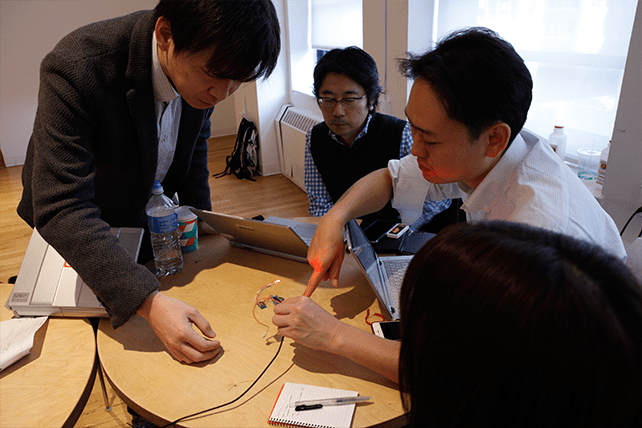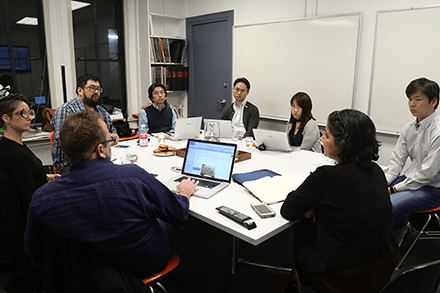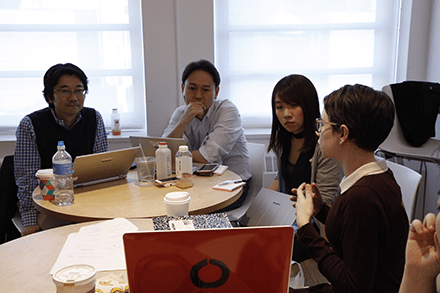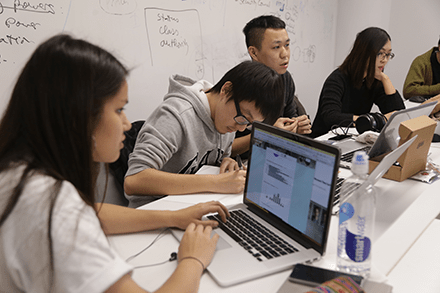Parsons School of Design and Panasonic have partnered to create wearable devices and experiences to address wellness needs. This is the backstory of the collaboration, from inception through to two winning designs exhibiting at SXSW.
The creative collaboration has begun
Wellness Support is a key project for Game Changer Catapult - Panasonic's innovation acceleration team composed of business leaders, engineers, and UX designers. "Wellness" indicates the quality of being healthy in body and mind, and also refers to approaches to healthcare that emphasize preventing illness through balanced lifestyle.
We had the interview with The New School's Parsons School of Design and Panasonic about the collaboration and why they have teamed up to create wearable technology pieces.
At Panasonic, a long-standing commitment to designing products that improve people's lives provides the foundation for our approach to health technology. "We have been around for 100 years. Making our products better and contributing to changing lifestyles and wellbeing for people is in our DNA," says Project Leader Nobuhiro Akimoto.
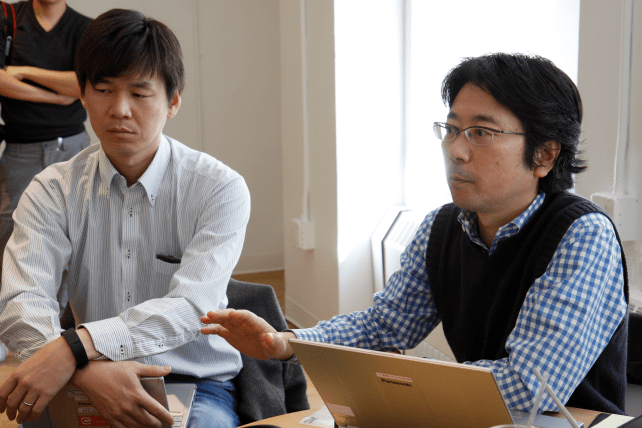
(Left)Engineer Takashi Morimoto (Right)Project Leader Nobuhiro Akimoto
This evolution of product design and exploration has led Panasonic to pursue people-focused innovations that have the power to improve the health of individuals and communities. "Hello Sunshine Initiative" is a manifestation of this pursuit.
Panasonic seeks partners who can advance the design process in ways that support healthier lifestyles and tell better stories for people. By fostering a collaborative approach to human-centered design, we are engineering new solutions for people by working directly with communities.
Integrating to Innovate
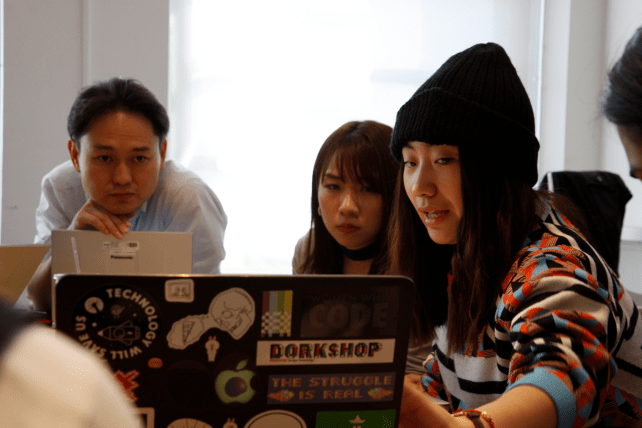
Discussion with Parsons students
The partnership with Parsons School of Design took shape when a team from Panasonic visited the school and observed the integrated application of design and engineering. The Parsons model of pairing engineers and designers working collectively offers a chance to envision new possibilities and design outside of traditional practices. "Integrated student teams are able to be more conscious of style, designing for experiences, and complete user eco-systems than any individual designer could be," says Panasonic UX Designer Kaho Asano. "That has a hugely positive effect on the development process."
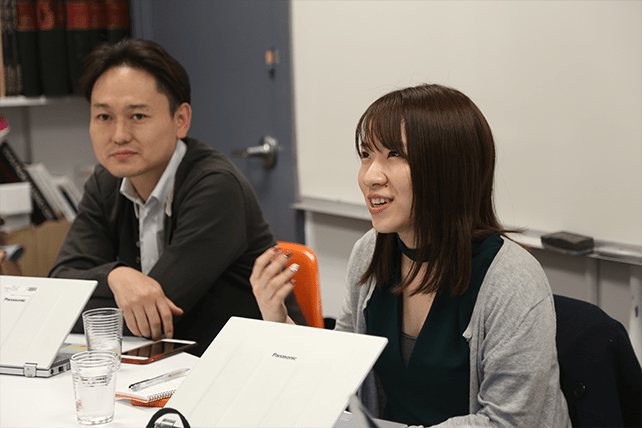 (Left)Engineer Tomoki Ogawa (Right)UX Designer Kaho Asano
(Left)Engineer Tomoki Ogawa (Right)UX Designer Kaho Asano
Adjunct professors Shaun Flynn and Kiersten Nash agree, pointing to the care that students take with social wellbeing as a difference-maker. "Bringing Industrial Design, Design Management, and Design and Technology students into collaborations is a great opportunity," says Flynn. "We ask students to really connect to culture...and we encourage each member of the team to use what they have and bring their assets to the table."
New Points of View
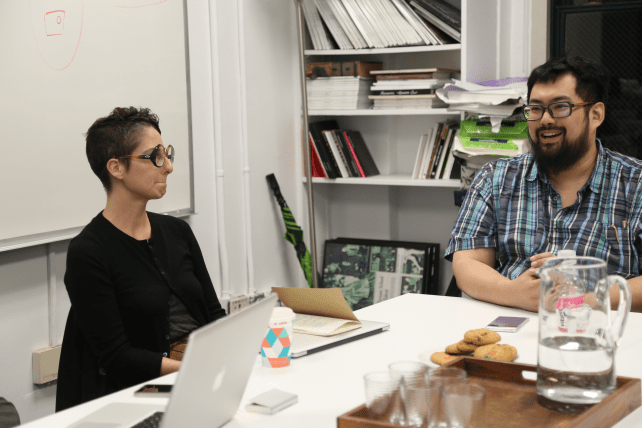
(Left) Adjunct Professor Kiersten Nash (Right) Co -Project Director Kyle Li
Appreciating the unique dynamic from another angle, Program Co-Director Kyle Li notes that a professional engineer usually doesn't have to be concerned with user experience or how to introduce technology into society. Instead, the end goal for that engineer is to develop more technology or more hardware. But at Parsons, student roles are not limited to titles or departments. Instead, teams are encouraged to share roles and, in doing so, share expertise.
This collaboration changes points of view, moving the focus away from cold engineering. "At the end of the day, that narrative piece is so often missing from traditional technology development," says Li. "But when students work here and they look at technology, their end goal is the user. That's a huge difference and that's an attraction for a lot of our partnerships. Everyone wants to see how artisans and designers can tell a different story."
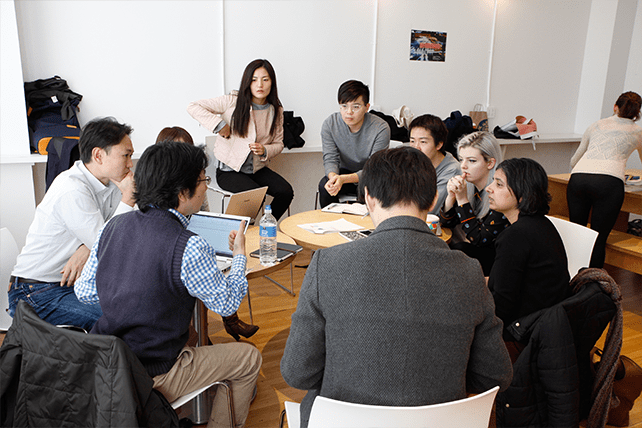
Feedback on the student presentation
While finding new ways to communicate and support the integration of technology into people's health routines is certainly a focus of the Panasonic x Parsons collaboration, the success of the project will be assessed in a variety of ways.
And as a capstone to our round of interviews, Shaun made a point that visibly resonated with everyone in the room. "Through design work, I've found this challenge of wellbeing for people at all levels," said, Shaun. "There's wellness and there's healthcare, and somewhere in the middle is wellbeing. This is about expanding the design thinking and support for wellbeing."
Two selected prototypes are going to be exhibited in SXSW 2017. Our exploration has just started, and we are so excited to find the new attractive stories with Parsons. Go to the next story.
